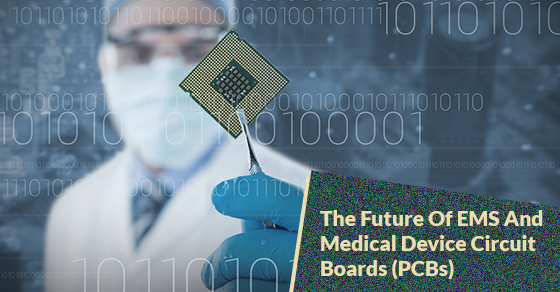The Future Of EMS And Medical Device Circuit Boards (PCBs)
Medical device manufacturers will see big changes in the future with how their printed circuit boards (PCBs) are made. Electronics manufacturing services (EMS) are adapting to new technologies that allow for industry advancements and a more optimized workflow, especially in the medical field. From nanotech to better batteries, here’s how medical device manufacturers are shaping the industry:
Battery advancements
The technology used in batteries is going to see changes due to the ever-growing demand for green technology. Battery life and energy storage will become more economical as the market for environmentally friendly technology continues to grow. In order to match that growth, medical device manufacturers are investing in advanced battery construction. With longer battery life and energy storage, newer medical devices will be able to outlast their older counterparts. Devices like robotic capsule endoscopes and implanted appliances will benefit greatly from better battery life, making it easier on those medical professionals who administer the devices and those who wear them.
Nanomaterial
Called as such because of the small scale it takes for them to be manipulated, nanomaterial may soon be the norm for medical device manufacturers. Besides green tech and advanced battery life, the industry demands low-power, lightweight devices that stand the test of time. The need for durable devices is a common theme heard by medical device manufacturers, and even the National Science Foundation predicts that the nanotechnology industry will become a trillion dollar endeavor by 2020. In using nano scale technology, manufacturers will be ripping the PCB industry wide open when devices start being made with nanomaterials instead. An example of this would be using a nanomaterial like printed graphene ink in lieu of the traditionally assembled circuit board.
Flexibility
Flexible electronics are going to be huge for medical device manufacturers. Think about how the healthcare industry would benefit from devices that can be washed, stretched and moved without damage. We will eventually see electronic medical devices that are embedded into flexible plastic materials. This will prove to be exciting for the future of wearable tech too, which is the bread and butter of medical device manufacturers. We’ll see an advancement in technology that relies on the improved battery life of nanotech PCBs, as mentioned above, to ensure that wearable devices are flexible and damage resistant.
Medical device manufacturers embracing new technology to further the healthcare industry is nothing new. If this trend continues, we will see the PCB industry adapting in kind.

